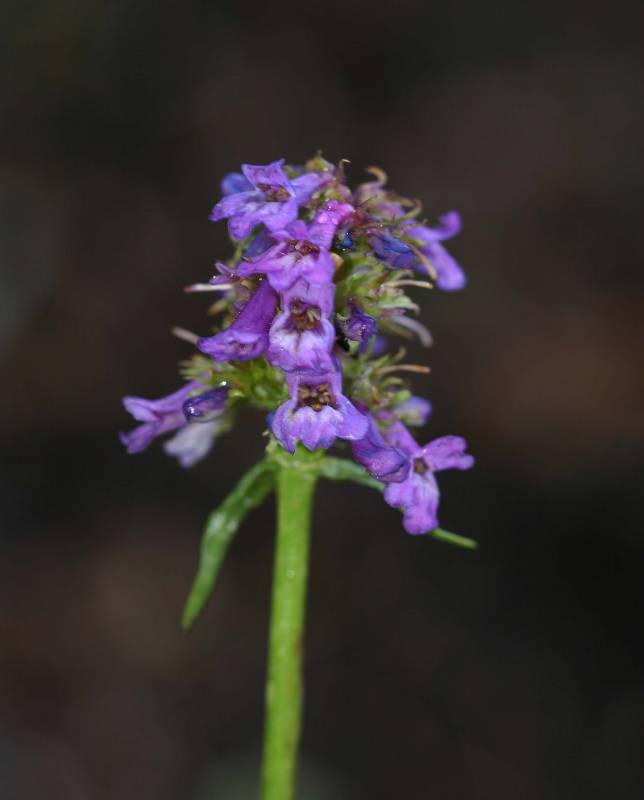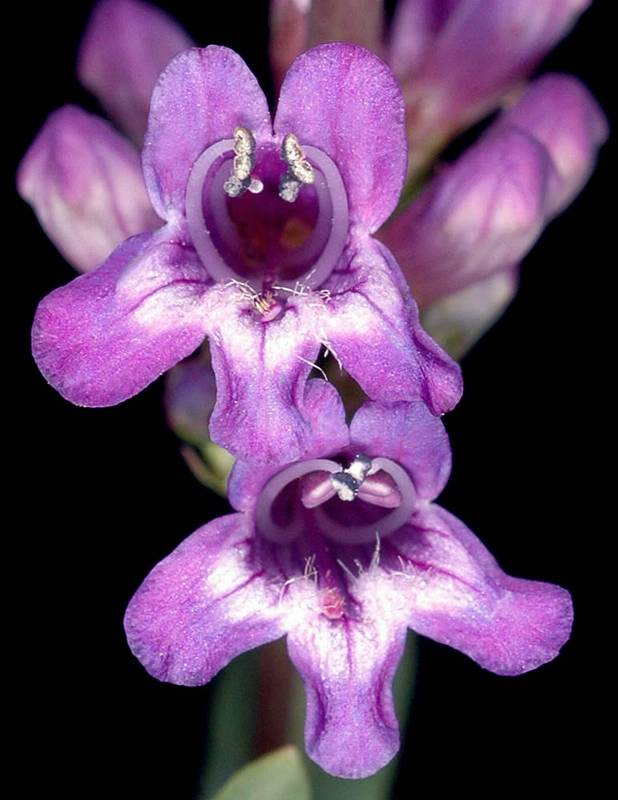Penstemon washingtonensis
Penstemon euglaucus
Washington beardtongue
glaucous beardtongue
Leaves opposite, entire, the basal ones well-developed and forming rosettes, 2.5-6 cm. long and 5-18 mm. wide;
cauline leaves few, sessile, often reduced.
Leaves opposite, entire, the basal ones petiolate, oblanceolate, forming well-developed rosettes, up to 15 cm. long and 2 cm. wide;
cauline leaves few, well-developed, sessile, not over 10 cm. long and 2 cm. wide.
Inflorescence of 1-3 dense verticillasters;
calyx 4-6 mm. long, the 5 segments tapered, with scarious margins;
corolla deep blue or occasionally pale yellow, glandular-hairy, 9-12 mm. long, the tube narrow, only 2-3 mm. wide at the mouth, the raised portion of the lower lip bearded;
pollen sacs glabrous, sub-rotund, 0.5-0.6 mm. long, wholly dehiscent, becoming opposite;
staminode bearded toward the expanded tip.
Inflorescence of 1-several dense verticillasters, the flowers spreading at right angles to the stem;
calyx 3.5-5 mm. long, the 5 segments broadly scarious-margined, abruptly contracted to a narrow, pointed tip;
corolla blue-purple, 11-15 mm. long, bilabiate, the tube expanded, 3-5 mm. wide at the mouth; raised portion of the lower petal bearded;
staminode usually bearded at the expanded tip;
pollen sacs glabrous, ovate, 0.6-1.0 mm. long, not quite opening to the tip.
Capsule 4-5 mm. long
Capsule 5-6 mm. long



